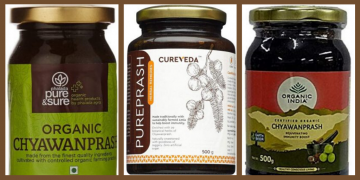Amla juice, aka amla sharbat, is storable. Yes, we will be making storable amla juice today. I want you to know that pure amla juice is different from storable amla sharbat.
Pure amla juice is sugar-free & bitter. Yup, amla, aka Indian gooseberries, are bitter. Along with being bitter, they carry a ton of health benefits. Even the Indian Ayurveda recommends consuming amla daily in a prescribed dose.
Since we have mentioned, Ayurveda let’s read about the health benefits of amla.
Health Benefits of Amla Juice
Amla is a natural powerhouse of nutrients. Whether you eat it raw, make juice or use it in powdered form, it benefits immensely by all means. Read exclusive health benefits of amla below.
- Amla contains vitamin c in abundance. It improves hair & skin.
- Help lose weight if drank on an empty stomach in the morning.
- It helps boost immunity & metabolism.
- Prevents body from viral & bacterial ailments.
- Amla is a natural antioxidant.
- Slows down the ageing process. (Ladies, read this twice. :D)
All in all, amla is a natural remedy for many ailments. Now that we know the health benefits of amla, let’s move on to the recipe ingredients.
Things We’ll Use For Storable Amla Juice
The reason for writing the word storable is big. Natural amla juice doesn’t last long. Now, if you add preservatives, then it’s a different story. Therefore, to make it last longer, we have made amla syrup. Let me introduce the item list.
Amla (Indian gooseberry)
I have taken 300 gms amla for the syrup. Remove seeds and cut each one of them into a quarter. Grind to make a thick pulp. Use a strainer or a muslin cloth to separate amla juice from the amla pulp.
Remember, amla is a winter fruit. Hence, preserve fresh amla when available so that you can eat them later.
Ginger
Grind ginger with amla. Similar to amla, ginger possesses unique sets of health benefits. The best part is we aren’t sauteeing, frying or tempering ginger in this recipe. This way, its natural nutrients remain intact. Hence, don’t skip ginger.
Sugar
To make amla juice storable in the form of syrup, we will use sugar. Boil amla juice & sugar till sugar dissolves & the mixture is a little thick. The benefit of adding sugar is the juice won’t burn, and the flavour remains intact.
Rock Salt
Ordinary kitchen salt can be a substitute for rock salt. However, juices & sharbat usually contains rock salt instead of plain white salt. You are free to use any of them.
Black Pepper Powder
Crushed or powdered black pepper will give your taste buds a spicy ride. Moreover, the black powder in transparent amla syrup is visually enticing. Refer to images in the steps below.
Lemon Juice
Lemon juice is for the khatta flavour. Instead of using artificial preservatives, lemon juice is far better. Do not replace lemon juice with white vinegar.
Amla juice is bitter & believe me, and it’s tough to gulp. Rock salt, black pepper, lemon juice, sugar, ginger all together makes it drinkable & storable as well.
Making Storable Amla Juice at Home
The making process is a breeze. Add sugar, rock salt, black pepper & lemon juice to amla juice in a pan. Boil the mixture till it becomes a little thick.
Do not make it thick like honey. A little less dense than honey is what we need.
Put off the flame & remove the syrup from the hot pan. Allow it to cool down completely. Store in a glass bottle. Don’t use a plastic bottle or container to store.
Only cold water and a few cubes of ice are needed to make a refreshing amla sharbat. Pour one or two tablespoons of amla syrup into a glass. Add ice cubes & water. Add a pinch of salt if you want. Mix well. Enjoy. 😀
When to Consume This Juice?
Now, since amla is in juice form here we can consume this 2-3 times per week. Remember to have this on empty stomach. It works best when you have nothing in your stomach.
Moreover, this can also be consumed as a mid-morning drink. Consuming gooseberry (amla) during nighttime is not very advisable. This fruit is believed to give you cold if we do so. Hence, avoid drinking this juice at night.



















